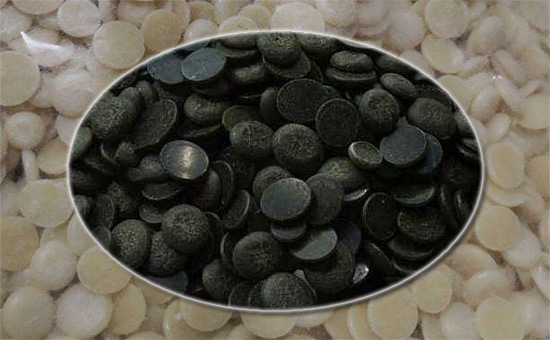
When producing rubber products using high Mooney viscosity natural rubber such as tobacco sheet rubber and zou tablet rubber, rubber product manufacturers need to use physical plasticizers such as pine tar, naphthenic oil, aromatic hydrocarbon oil, etc. It is also necessary to use chemical peptizers to further improve the processing conditions of rubber compounds. So what are the chemical peptizers commonly used in natural rubber in actual production? What issues should natural rubber manufacturers consider when choosing a plasticizer? What should I pay attention to during use?
1. Varieties of plasticizers commonly used in natural rubber
When using chemical peptizers to reduce Mooney viscosity of natural rubber and improve rubber compounding process, commonly used chemical peptizers are SJ-103, 12-Ⅰ, 12-Ⅱ, etc. SJ-103 belongs to thiophenol peptizer, which can obviously improve the plasticity and plasticizing efficiency of natural rubber plastic mixing, and can reduce the average plasticizing time by about 1/3 on average, and will not affect the machinery of natural rubber products during use. Strength and aging resistance; Peptizer 12-Ⅰ is a high-efficiency peptizer, which can be evenly dispersed in natural rubber, obviously speeding up the process of natural rubber plastification, and will not affect the vulcanization speed and performance of vulcanized rubber during use; The chemical composition of agent 12-Ⅱ (PCTP) is pentachlorothiophenol, a special plasticizer for natural rubber.
2. Dosage of plasticizer in natural rubber
When using chemical peptization to improve the efficiency of natural rubber mastication, the amount of peptizer is not as good as possible. Too much amount of peptizer 2LLYY619 will not only affect the properties of natural rubber (such as Mooney viscosity is too low, the rubber is easy to stick the roller, etc. ), will also accelerate the consumption of antioxidants in the formula. In actual production, the amount of PJ-103 and 12-I can be controlled between 0.1-0.3 parts.
3. Tips for adding plasticizer to natural rubber
Different types of plasticizers have different application characteristics in the plasticizing process. When rubber products manufacturers choose plasticizers, they need to determine the types of plasticizers according to the rubber mixing equipment and master the timing of the addition of plasticizers. In general, the rubber peptizer SJ-103 can be used in both open mills and internal mixers. It can be added separately during the plasticizing process, or it can be added simultaneously with accelerator M and accelerator DM; Peptizer 12 -Ⅰ can only be used in the plasticizer process of the internal mixer, so only manufacturers of open mixer equipment should avoid using the plasticizer 12-Ⅰ as much as possible.
When improving the processing performance of natural rubber, chemical plasticizers are generally used in combination with physical softening plasticizers. At this time, rubber product manufacturers also need to consider the impact of chemical plasticizers and plasticizers on the physical and mechanical properties of natural rubber, and consider softening and plasticizing. The effect of the agent on the color of natural rubber products, especially light-colored natural rubber products. Later editors will continue to share with you the selection and application of other compounding agents in the production of natural rubber products.
Exclusive original article [commercial authorization] reprint, excerpt and excerpt in any form are prohibited without written authorization. Focus on Hongyun rubber: learn the process formula and raw material technology of producing rubber products from recycled rubber to help you reduce costs and increase profits